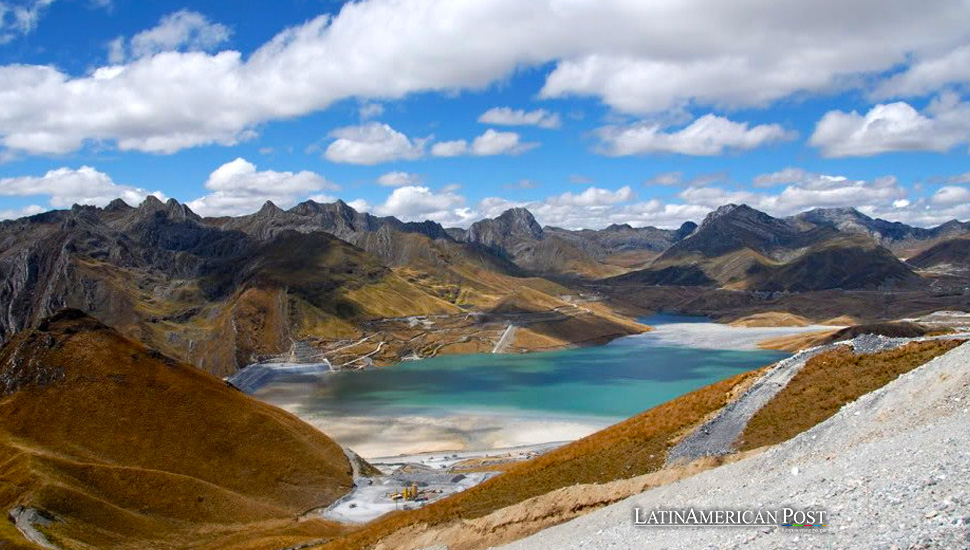Peru’s Antamina Mine Expansion is a $2 Billion Investment Amid Environmental and Social Scrutiny

The National Service of Environmental Certification for Sustainable Investments in Peru (Senace) has approved a crucial modification to the environmental impact study of the Antamina copper mine, paving the way for operations extension until 2036 with a $2 billion investment amidst ecological and community concerns.
Peruvian Mining Sector Gets Green Light for Antamina’s Expansion
In a significant development for Peru’s mining sector, the National Service of Environmental Certification for Sustainable Investments (Senace) has greenlit an essential modification to the environmental impact assessment of the Antamina copper mine. This approval, detailed in a resolution published in the official newspaper El Peruano, allows the mining operation to extend its lifespan until 2036, representing a substantial $2 billion investment into the region of Ancash. This move is a nod to economic development and a testament to the intricate balance between industrial progress and environmental stewardship in Latin America.
Located in the district of San Marcos, within the Andean region of Ancash, Antamina’s expansion involves optimizing existing mining components within its current operational area. The approval process included favorable technical opinions from several national authorities, including the National Water Authority and the National Service of Natural Protected Areas by the State, showcasing a comprehensive evaluation that spans various environmental and cultural considerations.
Antamina, backed by global mining giants such as BHP Billiton, Glencore, Teck, and Mitsubishi, has emphasized that this environmental impact study modification will bolster the mine’s environmental, social, and operational sustainability. Víctor Gobitz, president of the company, hailed the development as a milestone for Antamina and the Peruvian mining industry, reinforcing the company’s commitment to the country and specifically to the Ancash region.
Balancing Progress and Skepticism: Engineering Changes for Safety
The modifications include expanding the open pit’s footprint and optimizing waste dumps and the tailings dam. These changes, designed under strict engineering protocols, aim to ensure safe conditions for workers and adjacent communities. Yet, the narrative of industrial progress is often met with skepticism and resistance, especially from those directly impacted by such large-scale operations.
In September, hundreds of residents from the district of Llata, in the central region of Huánuco, marched to Antamina’s facilities in protest. The demonstrators, repelled by the National Police of Peru, voiced their grievances over alleged unfulfilled agreements, highlighting a recurring theme in Latin America’s resource-rich landscapes: the clash between natural resource extraction and community rights and environmental preservation.
This situation in Peru is not isolated. Across Latin America, countries grappling with wildfires and environmental degradation face similar challenges. In Brazil, the Amazon rainforest has seen unprecedented fires, often linked to deforestation for agriculture and mining. The Chiquitania forest fires in Bolivia have raised questions about land management and environmental policies. These incidents underscore the delicate balance countries must maintain between exploiting natural resources and preserving their environmental heritage.
Antamina’s Role in a Broader Regional Narrative
Antamina’s case reflects a broader regional narrative where economic interests, environmental sustainability, and social equity must be harmoniously balanced. The mining sector, a significant contributor to Latin America’s economy, often finds itself at the center of this complex web, navigating between advancing economic development and adhering to environmental and social responsibilities.
The approval of Antamina’s environmental impact study modification serves as a microcosm of the challenges and opportunities facing Latin America’s mining sector. It highlights the importance of rigorous environmental oversight, community engagement, and sustainable practices in ensuring that the continent’s rich natural resources can be harnessed to benefit both current and future generations.
Also read: Colombia Secures Multimillion-Dollar Loans to Bolster Peace Plans
As Peru and other Latin American countries continue to explore and expand their mining operations amidst environmental and social challenges, the story of Antamina serves as a reminder of the need for a balanced approach. One that seeks to extract value from the ground and invests in the ecological and social fabric of the communities it impacts. This ongoing dialogue between industry, government, and community is crucial in shaping a sustainable future for mining in Latin America, where the earth’s wealth can be utilized without compromising the planet’s health or the well-being of its people.




